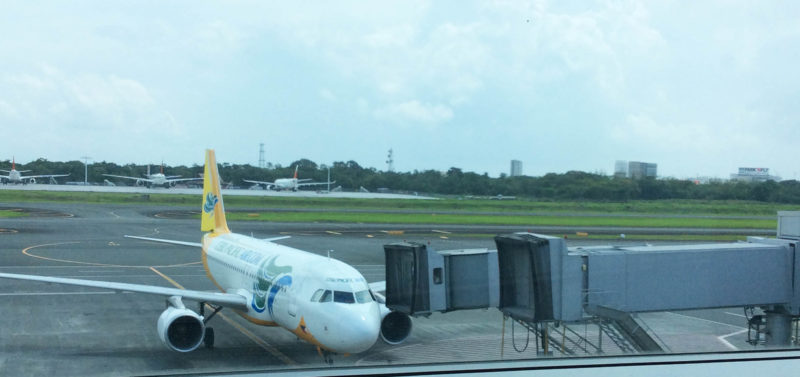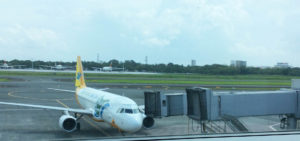Cebu Pacific and its subsidiary Cebgo have reported a net income of P7.908 billion in 2017, or 18.9% lower than the P9.754 billion earned in 2016 despite recording higher revenues last year, the dip attributed higher fuel expenses and fleet expansion costs.
The airlines’ parent company, Cebu Air, Inc. (CEB), in a regulatory disclosure said revenue in 2017 rose 9.9% to P68.029 billion in 2017 from the P61.899 billion generated in 2016.
Revenues from its passenger operations increased 7.2% to P49.931 billion from P46.593 billion, mainly attributable to the 3.2% growth in passenger volume to 19.7 million in 2017 from 19.1 million in 2016.
CEB said the growth in passenger traffic was driven by an increase of 3.6% in the number of flights in 2017 as the company added more aircraft to its fleet. The number of aircraft increased from 57 in 2016 to 61 aircraft as of December 31, 2017.
The increase in average fares by 3.8% also pushed up passenger revenues.
Cargo revenues likewise grew 29.2% to P4.603 billion in 2017 from P3.564 billion in 2016 following the increase in cargo volume and yield in 2017.
Revenues from ancillary services also went up 14.9% to P13.494 billion in 2017 from P11.743 billion in 2016, consequent to the 3.2% increase in passenger traffic and 11.3% increase in ancillary revenue per passenger.
CEB said this was driven by improved online bookings, pricing adjustments, and introduction of new ancillary revenue products and services.
The group in 2017 incurred higher operating expenses totalling P57.895 billion. This is 16.6% higher than the P49.648 billion in operating expenses recorded in 2016.
CEB said the increase was primarily due to the rise in fuel prices in 2017 coupled with the weakening of the Philippine peso against the US dollar. The growth in the airline’s seat capacity following acquisition of new aircraft also contributed to the increase in expenses.
As of December 31, 2017, the group operates an extensive route network serving 76 domestic routes and 37 international routes with a total of 2,485 scheduled weekly flights.
It operates from seven hubs, including the Ninoy Aquino International Airport Terminal 3 and Terminal 4; Mactan-Cebu International Airport; Clark International Airport; Davao International Airport; Iloilo International Airport; Kalibo International Airport; and Laguindingan Airport.
As of 2017, the group operates a fleet of 61 aircraft, but it has plans to expand its fleet over the next three years by adding 32 aircraft by the end of 2020. The additional aircraft will support plans to increase frequency on current routes and to add new city pairs and destinations.
For 2018, the group has expanded its domestic growth and market share by deploying more A330 aircraft to Cebu and Davao, and upgrading key domestic routes from ATR to A320 aircraft.
Market share expansion was also achieved by boosting inter-island connectivity with the introduction of new flights from Manila to Tablas, Masbate, and Siargao; from Clark to Caticlan and Busuanga; from Cebu to Busuanga, Cotabato, and Masbate; from Cagayan de Oro to Bacolod, Caticlan, Dumaguete, Tagbilaran, and Zamboanga; from Davao to Dumaguete, Tacloban, and Tagbilaran; from Kalibo to Clark; and from Zamboanga to Cotabato.
The airline also increased frequencies on existing routes such as Manila to Caticlan, Davao and Dumaguete; and Cebu to Siargao.
Moreover, the group launched direct flights between Manila and Batanes on March 25, 2018.
Frequencies on some international routes were likewise raised, such as those from Manila to Bali, Hanoi, Osaka, Nagoya, Tokyo (Narita), and Sydney.
The group also upgraded selected flights between Manila and Hong Kong from Airbus A320 to the larger A330 aircraft to accommodate additional passenger traffic.
Three long-haul routes were suspended during the year, namely, Manila to Riyadh, Kuwait, and Doha.






